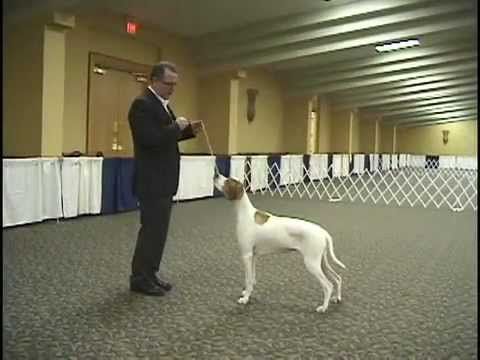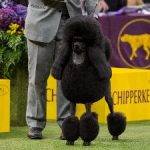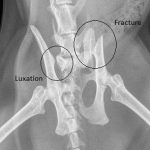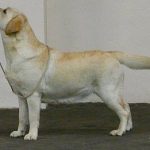
Grooming your dog
WHAT IS DOG GROOMING?
Most people think of dog grooming as dog submission, expressed by following commands "sit", "watch", "leg" i "return". This attitude, however, only shows the human desire to control the dog. Everyone will agree with the thesis that a dog should be stacked. We can always take a well-behaved dog with us. He does not pursue walkers, joggers, cyclists, in-line skaters. Otherwise, it does not meet with the kindness of the prosecuted. It is also not very nice when the person we meet is wearing bright clothes that are covered with dog paw prints, because our little dog wanted to say "reverence". Also, dogs that react aggressively to other dogs from a distance and want to chase them away immediately are not so lovable anymore. For small breeds this can be very dangerous, and with large dogs it looks very dangerous. Also those that want to immediately run up to other dogs are very disruptive. And we have had enough of sentences like "He won’t do anything, he just wants to play". Especially if we are afraid of dogs or afraid for our own dog. Our dog may also not want to play with this, "who won’t do anything". Dogs themselves are also sometimes finicky. They are more willing to look for themselves "buddies" to play. Then there are the hunters who understandably don’t like trotting dogs.
They often don’t understand that also the dog "would like to have some pleasure". Also agree that the dog needs to be groomed. The size of the dog doesn’t matter. Sometimes we want to go out with the dog always on a leash. It’s not that pleasant for your dog, no matter how long the leash.
And now comes the question of how it is with this dog stacking?
Grooming a dog means understanding the dog and giving it clear and comprehensible information about its position in the hierarchy. An orderly hierarchy is, from his point of view, the most important thing in life. The highest individual in the hierarchy gives the signal to hunt, says where to go and what to do. There is a sentence in one of the books that actually expresses this:
"A position in the hierarchy is not created by arranging the dog, but arranging the dog is possible through the right hierarchy".
But how to establish the right position in the hierarchy? Certainly not by constant use of force. Also not with spikes, thrown chains or shouting. This behavior shows the dog that we are not able to lead a pack (because dog + handler are, from the dog’s point of view, a pack). In a dog pack, the boss is never the loudest or the most violent, but on the contrary the most independent and considerate. One that even in the most crisis situation retains clarity of thought. So, we should not be surprised when, trying to remind a dog of his position for no reason, he breaks out of our control with unnecessary force. A situation in which a dog, e.g. is led only on a chain, by a handler with a lower position in the hierarchy will certainly lead to confrontation and when e.g. if we make the dog stand or return, in a critical situation, the dog will be disobedient. In the beginning, these forceful solutions may be enough, but at some point they are no longer enough and what happens next? What options do we still have to improve our own position? Maybe we should ask ourselves if we have what it takes? Anxious dogs, using these methods, quickly lose trust in their handlers, and the tougher dogs quickly become indifferent to what the handler represents.
Also "be nice to your dog – do everything for him and expect him to be grateful", in which the dog sees only free benefits for itself is not the right behaviour.
For the dog, this means that the owner is subordinate to him and constantly asks for charms and attention, which the dog obviously sees and ignores. You should find an intermediate solution, suitable for the dog and be consistent.
However, the most important thing in the process of training a dog is to learn to understand it, to recognize it "speech" and talking to him. It often happens that the dog gives encouraging signals which the handler does not understand and ignores. And then he is surprised that the dog does not look at him and looks around for other dogs. And those at least more or less understand him. In other cases, the handler does not notice that the dog has long taken control of him and his surroundings. And that just amuses him "going around as soon as he growls".
Puppy play. Cognitive period. Why?
Puppy age is the most important period in a dog’s life, laying the foundations for the rest of his life. Everything the puppy experiences will enrich his later life. This period of gaining experience starts at around. 4. week and ends up in ok. 16. week of life. Due to the fact that we get a puppy at the age of min. 8. weeks remains little time to adapt the dog to our environment. At the age of ok. 16. the weeks are also the end of puppyhood as such. And not as some think at the age of "year". At the age of approx. 4. months is the start of puberty and most dogs start trying to see how far they can go. (The second phase of maturation begins at about the age of. year and is even stronger, depending on the dog. Therefore, already at puppy age we should take care of a good preparation in the field of placing the dog. Even if we think there is not much a dog can do for us during this period, the situation will return in the future.) In short: everything a puppy will experience until 16. week of life will always inspire his confidence. Everything he learns now through praise and play will remain for the rest of his life. At this age is also laid the foundation for later obedience. Often if here does something wrong, later we can not do well or it is very difficult. Bad experiences also remain, so forceful exercises e.g. clip collar. Most of the problems seen in the future arise at this age. You should be aware of this when you own a puppy.
Many dog schools offer courses for puppies commonly called "doggy daycare". In these courses there is very little or no work with puppies. Mostly it is uncontrolled play, through which independence and self-reliance develops, and then comes to a surprise when the now adult dog, is not at all interested in his "friend" human when he sees other dogs (m.In. (the famous and often described reluctance to leash appears). Then "small" they are already learning to smother others here or are being smothered themselves. More often than not, subsequent behavioural problems arise already during these activities. (Problems that a good trainer does really well on).
Some trainers are of the opinion that young dogs should not be trained too early. However, such a sentence is old-fashioned and only brings something to the trainer. Namely money, when it meets mature dogs in the age of pow. 6. months on obedience courses when problems have already arisen. The owner is often disappointed later when he cannot learn the behaviour of his beloved puppy. Also, putting a dog on its own without distraction stimuli doesn’t have much effect because it has to deal with them outside of the training yard. Then "small" they have to listen, because we can’t always avoid the dog’s entertainment. In addition, most courses are held in closed training yards. There is often a lot of play and toys (like in a human daycare). Nice. But do I want my dog to get to know this playground and children’s toys? Is this our, human environment in which the dog is supposed to find itself? Probably not. When the idea of puppy courses was invented years ago, it was not meant literally "doggie daycare". Getting to know your environment doesn’t mean going to a closed yard. On the contrary, we should accustom the puppy to situations that may occur in everyday life through the company of adult, mature dogs with some social behaviour in the forest, in the open air and also in the city. And at the same time, taking advantage of the puppy’s great willingness to learn, introduce some basic commands. Of course by means of praise and treats without unnecessary pressure. Naturally, you should still play regardless of the age of the dog. Exercises should be very short and interrupted by longer breaks, also when training in the city. Here too, in the play phases, the dog can be accompanied by a social adult dog who has experience with puppies to sometimes step in when the puppy "exaggerates". Puppies learn best from other dogs. Also the so-called. social behaviour is not learned from other puppies but primarily from adult dogs. (Do children only learn from other children?) This type of work is more complete for both trainer and dog owner than working in a closed yard (where we don’t have to pay attention to other dogs, runners or cyclists) and it pays off in every case for the dog and its owner. Training in one place only does not work in the long run.
Behaviour of the dog.
A whole series of books have been written on this subject, so just a few comments. Social behaviour does not mean that all dogs understand each other. As if following the motto: all dogs are brothers. Even gentle dogs sometimes fight. Social behavior means the dog can read "dog’s speech" and express it himself.
But first he has to learn it. To avoid unnecessary stress and conflict, dogs have the ability to send warning and threatening signals to peacefully clarify their positions in the hierarchy. These signals can be seen even in very small puppies. But already here dogs learn to understand and send these signals. We humans often disturb them, or constantly suppress them, and they stop sending these signals. Owners should always be able to assess their dog properly. They should maintain a position of leadership even in critical situations, because dogs need this. This is lighter to read than it is in real life, but it can be learned.
First of all.
The dog calculates and considers! That is, he carefully evaluates losses and gains. If he has only a little stronger temperament and self-confidence, he will put up with a lot to achieve his goal, e.g. high level of pain. For example: biting each other means pain, but the dog takes that into account when striving for the highest position in the hierarchy. It considers whether it can defeat an opponent. If you decide to "so" Will take on even the greatest danger. Every dog, guided by its instinctive behaviour, knows that striving to establish a position in the hierarchy can even lead to its own death. Hence the methods used (exclusively) by the owners "painful" is often an insufficient and insecure blockade, which, depending on the dog’s resilience, keeps returning to its consideration.
The only permissible, appropriate and genetically determined obstacle to the pursuit of benefits is prohibition by the individual in control of the pack. Because mere presence "supervisor", whether human or canine, holds back "lower" before it oversteps its rights in order to avoid the danger of conflict.
It goes without saying that these prohibitions lead to benefits for the superior and losses for the inferior. Will you allow yourself to be ordered around by the weaker?
Adolescent dogs.
Suddenly you do not recognise your previously wonderful dog at all! He may be on his way to maturity at this point.
The first phase of puberty begins between the ages of 5., a 9. one month of life. (Depending on the breed, also earlier or later. Breeds that develop later are also left to mature longer.) On the one hand the dog looks like an amused youngster, on the other hand he wants to know his permanent place in the pack. It is usually just "Mindlessly insolent and intrusive". Males in particular. Things that he knows he suddenly barks at, others he is suddenly afraid of, etc. Females are generally less nervous, but more often biting. They try to defend their territory etc.
Also, the first skirmishes with other dogs arise. The tests show how far one can go.
In any case, dogs are very disruptive at this age. One day they suddenly rule in the house, the next they do not know their name.
These phases reappear ok. 12. month in an even more violent form. Everything the dog learned in puppyhood returns.
But all the same, whether the puppy has received a good foundation or not, we can not just watch and wait what will happen. It is now that the dog needs a clear position in the hierarchy and a caring but consistent upbringing.
Unnecessary coercion or pressure will not accomplish anything in the long run.
Anxiety and fearful aggression.
Fear of people, dogs, noises or the environment in general is experienced by many dogs. Viewed from this point of view, in the long run, constant fear leads to severe stress and illness, which can quickly develop into fearful aggression (the drive to increase distance). Such a dog will react as soon as he feels pushed to the wall. When a dog feels cornered depends on the situation and its mood. Mostly he tries to avoid such situations, but if he doesn’t succeed, he retreats, stands still, or goes forward (growling, grabbing, or even biting).
If he only succeeds with the last method, e.g. When the person they meet steps back, even just a little, they know they must continue in this way. The path from grabbing to biting is very short.
Therefore it is necessary to make the dog more self-confident and thus feel safer. But even here you have to be careful not to do something wrong. One more tip to get another dog to such a fearful dog, it should have a good effect on him. The other dog should be older and very confident (not necessarily dominant). A younger dog will probably imitate an older one, so that, one day, this will be a solution to anxiety problems.
So first of all, let’s pay attention when we get a puppy. Later in adolescence he will be less self-confident. Because of the race, it can be very dangerous. In addition, it should be noted when buying a second dog that he is new and thus also less confident. Not all fearful dogs try to avoid. Very many of them, in situations that create anxiety, move forward. And then the other one comes after him. It is better to work on an individual dog’s anxiety problem first. It is obvious that this should be done by pressure, but responsibly, through appropriate signals.
The passion to destroy.
This is also sometimes a sign of fear or a tendency to dominate. Here, too, something can be changed, but not with force and shouting, but with expertise and maturity. Stifling (bullying).
It happens very often in group play. Whether for puppies, young or adult dogs such groups lead to stifling. Such individuals should be met with an appropriate response so that they learn that "bullying" is the privilege of the handler (alpha) only, who m.in. separates individuals and controls situations to minimize pack conflicts.
"Killer"
Briefly about the so called. "Killers". In this case, it is essential to show the dog other, non-confrontational routes to its destination. Both to claim the right to make decisions and the very leadership of the pack. "Killers" differ in their basic motivations, which must be identified through corrections and their roots eventually removed. This should be the basis of any corrective behavior.
The right feeling, expertise, consistency of the handler are essential for success. We humans must learn to understand the dog in order to be able to give it the right signals. Dogs raised by unnecessary, inadequate pressure will never be sufficiently obedient in a critical situation.
who is the boss?
1. Whether he lets himself be asked for something repeatedly or ignores us completely when he wants something from us, we always respond to the invitation to stroke, feed, play and are always ready to go outside immediately.
2. He has his own place in the house where he can stay and lie down and none of us can disturb him there. He walks in front of us up the stairs and through the door. He lies down in important passageways and doorways and does not get up without a clear command. He expects us to step over him.
3. Receives as the first meal, and we only symbolically get what is left over to be satisfied. He can eat any food in the house but he vigorously defends himself against giving it to anyone. We adapt, "because you don’t take food away from your dog".
4. Marks the territory outside, but also often in the house, which may also be an expression of lack of cleanliness.
5. He or she dominates us with their constant striving to assert their position, e.g. stands still in front of us and forces us to walk over or around him.
6. Confirms his position by going out for a walk i.e. pulls on the leash and leaves his master behind and makes him wait when he has something interesting to investigate on his way.
7. Along the way he watches over his pack and participates in all events.
8. He defends his territory independently against other dogs and strangers. He is loud and often aggressive.
9. In a situation where he runs in front and does not return on command, we treat him as if he were in a pack "exceptionally" , begins to behave no differently than "hunter" leading the hunt, which is reserved for those higher up in the hierarchy.
10. Possible attempts to change his status in the hierarchy i.e. He treats it as a necessity for self-defense, also against his human pack members by e.g. stiff posture, growling, showing teeth, pinching or biting.
The above points may occur individually and do not necessarily have to be as overtly visible as the ones described above.
For a dog only one thing is obvious: someone always has to be the Boss, because without the Boss it is simply impossible.
We are to blame for the dog thinking he is the Boss.
It doesn’t matter if we were too hard or soft in our upbringing, and that we don’t understand his speech and thus unconsciously gave him the idea that we are not capable of leading the pack. This does not mean that we must now "hit". Certainly not. We must let him know in his own way that he can put the leadership of the pack on us. That we are not only from feeding, leading, but also we can protect the pack, and the dog is only our helper.
A good pack leader is always sovereign, as controlled as possible and does not allow himself to be provoked easily.
Praise and punishment.
To begin with: we have only a few seconds of time to praise or reprimand the dog. Otherwise, the dog will not associate the action performed with a reward or punishment. Even when we think the dog knows exactly what it has done (e.g. stands like a duck with his head down), let’s not be disappointed. The dog associates only specific things with itself and does not do so because it has done something wrong, but recognizes the intonation of the voice and the behavior of the owner.
There are peculiar views on this subject, also among trainers, e.g. treats are bribing your dog. There is an opinion that a dog should be obedient because it loves its master and not because it is bribed with food. This is of course nonsense, because it is based on human interpretation of its own behavior transferred to dogs. Praise is nothing more than motivation. It is much easier for a dog to learn when it immediately receives praise for correct behaviour.
Praise can be done in many ways:
– by voice – this type of praise must always occur and be associated with something pleasant
– treats – especially important at the beginning, but also later bring good effects, besides we make the dog aware that it is us who share the food (as alpha) – playing with the dog
– stroking
– unhooking the leash – freedom of movement (but when the dog pulls on the leash when it sees its friends and we unhook the leash, we unconsciously praise it for pulling)
– Release from the command
– in many other ways depending on the dog
Praise must always occur.
Sentence "the dog should listen to me as I am the pack leader" is quite correct. But also the boss praises e.g. by its behaviour. In addition, only a few handlers are true pack leaders.
Besides, the dog must first learn the expected behaviour and associate it with the correct commands. Proper praise never gets in the way. A positively motivated dog works better and listens better.
Which types of punishment are good and which are not?
The verbal, chastising signal that accompanies an erroneous action is important and falls immediately at the time the error occurs. This should be a stressful situation for the dog.
– voice – energetic intonation, a short reprimand is usually enough, no pointless shouting
– grabbing the muzzle – the dog knows it from the puppy times because it was punished like that by its mother
– attaching the leash
– other ways of frustrating the dog that will result in future reluctance to similar stressful situations









